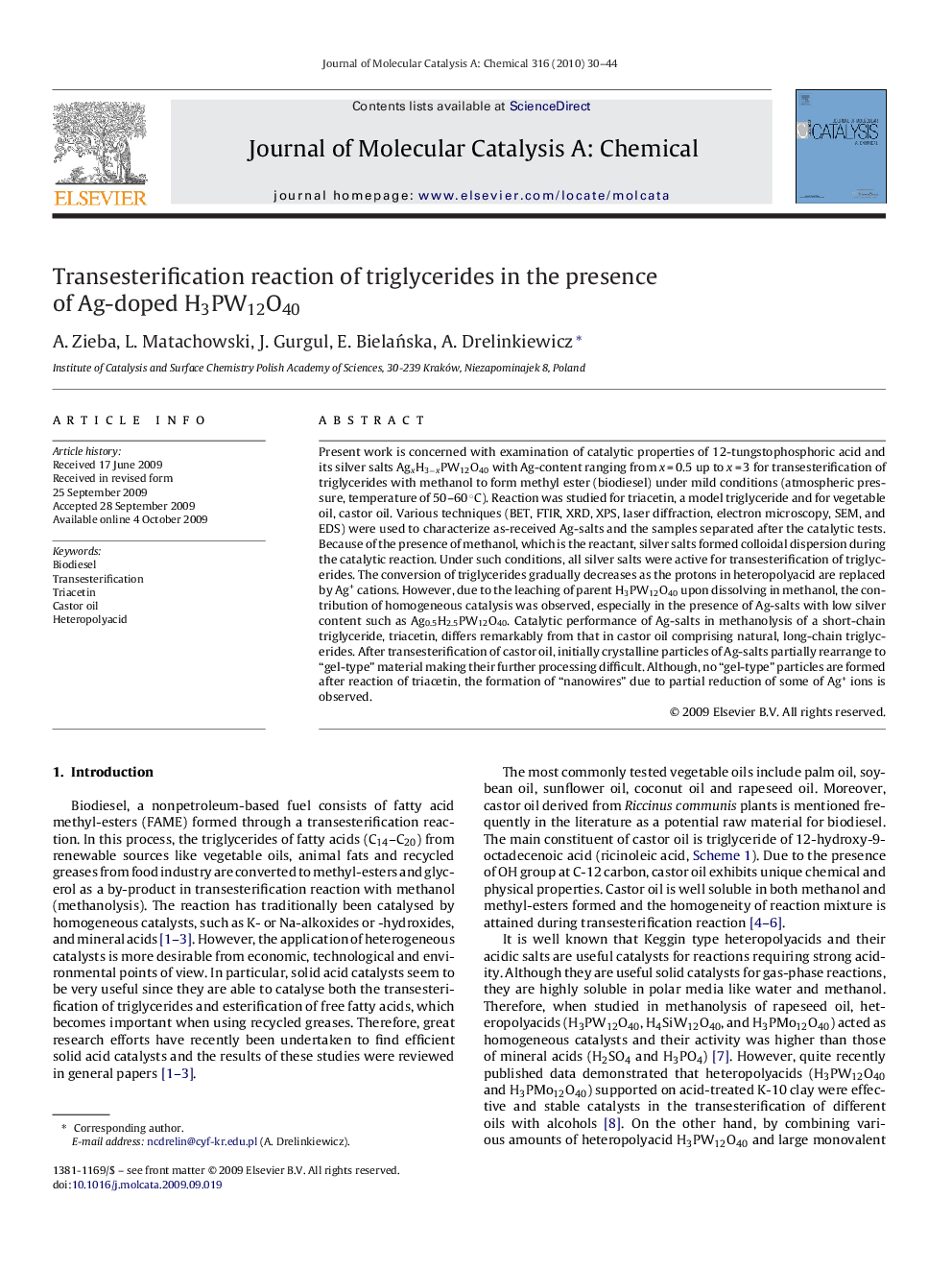| Article ID | Journal | Published Year | Pages | File Type |
|---|---|---|---|---|
| 66886 | Journal of Molecular Catalysis A: Chemical | 2010 | 15 Pages |
Present work is concerned with examination of catalytic properties of 12-tungstophosphoric acid and its silver salts AgxH3−xPW12O40 with Ag-content ranging from x = 0.5 up to x = 3 for transesterification of triglycerides with methanol to form methyl ester (biodiesel) under mild conditions (atmospheric pressure, temperature of 50–60 °C). Reaction was studied for triacetin, a model triglyceride and for vegetable oil, castor oil. Various techniques (BET, FTIR, XRD, XPS, laser diffraction, electron microscopy, SEM, and EDS) were used to characterize as-received Ag-salts and the samples separated after the catalytic tests. Because of the presence of methanol, which is the reactant, silver salts formed colloidal dispersion during the catalytic reaction. Under such conditions, all silver salts were active for transesterification of triglycerides. The conversion of triglycerides gradually decreases as the protons in heteropolyacid are replaced by Ag+ cations. However, due to the leaching of parent H3PW12O40 upon dissolving in methanol, the contribution of homogeneous catalysis was observed, especially in the presence of Ag-salts with low silver content such as Ag0.5H2.5PW12O40. Catalytic performance of Ag-salts in methanolysis of a short-chain triglyceride, triacetin, differs remarkably from that in castor oil comprising natural, long-chain triglycerides. After transesterification of castor oil, initially crystalline particles of Ag-salts partially rearrange to “gel-type” material making their further processing difficult. Although, no “gel-type” particles are formed after reaction of triacetin, the formation of “nanowires” due to partial reduction of some of Ag+ ions is observed.
Graphical abstractTransesterification with methanol was studied for natural oil, castor oil and triacetin, a model compound in the presence of 12-tungstophosphoric acid and AgxH3−xPW12O40 salts with Ag-content x = 0.5 up to x = 3. The activity data obtained under homogeneous and heterogeneous catalysis are compared.Figure optionsDownload full-size imageDownload as PowerPoint slide
